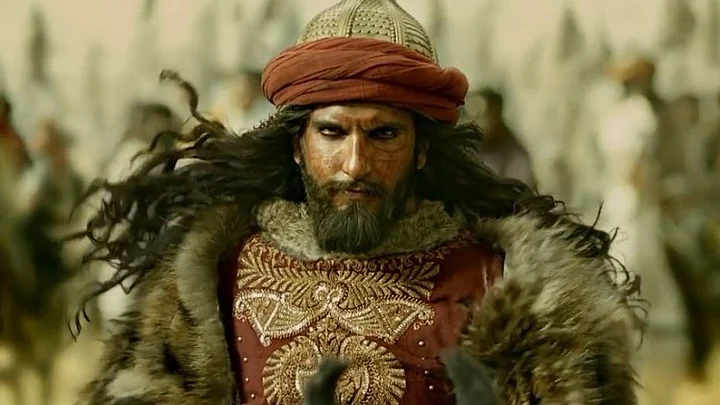The protests and violence around the making, anticipated release and final release of the film Padmaavat have shamed the democratic ethos of our society. The organisations behind these acts are primarily Karni Sena, Hindu right wing types telling us that Rajput honour has been undermined in the film, and so the protests. The main grudge of the protesters had been that there may be a probable dream sequence between a Muslim, villain type Alauddin Khilji and the Rajput princess Padmavati.
While there have been protests mainly on the grounds that the history of Rajputs has been distorted in the film, the fact of total distortion of the persona of Khilji has been totally missed out in the social discourse.
The film toes the line which is in conformity with the prevalent stereotypes of ‘noble Hindu kings’ versus ‘evil Muslim kings’. On one hand it follows and boosts the patriarchal notions, which as such should please the Karni Sena clones to their heart’s content. On the other, they should equally be pleased that the Muslim king has been presented as a devilish brute, devoid of any culture.
The way Khilji is portrayed, a barbarian savouring meat, wild-haired, baring his chest, running after women, a murderer and a rapist; does not conform to the accounts which serious historians have presented.
The historian, the likes of Satish Chandra, Rana Safvi and Rajat Datta for example, present some aspects of Khilji.
Khilji drew from the sophisticated Persian culture. Historian Safvi points out that he followed the culture where the “rulers followed the exact code of conduct and etiquette as in Persia. It would have been very formal — the eating, dining and sartorial choices.” The eminent poet of medieval India Amir Khusro was part of his court. As per Satish Chandra, Khilji also made rules, which were not in conformity with the dictates of conservative Ulema.
His image shown in the paintings of his time show him to be a finely attired person - a far cry from the rugged furs in which he is depicted in the film. He revived and implemented the land tax based on the sown area of the land. This assessment of land revenue on the individual cultivator reduced the burden of strong (landlords) on the weak (cultivator).
His alliance with Hindu king Raja Ramdev of Devgir (Gujarat) for example was an act of expansion of his area of influence. His focus on the constructions of buildings in his tenure was remarkable, as he employed nearly 70,000 workers for this work on regular basis. The outcome like Hauj Khas (70-acre water reservoir in Delhi) was just one of these acts.
Khilji, through his clever strategy as a military general, thwarted off the attack of Mongols and protected the Delhi Sultanate from the invasion of nomadic Mongols. Mongols were expanding their empire but their only interest was to extract the tribute and plunder wealth from the kings whom they defeated. Their destruction of defeated areas left those settlements in dire straits. The likes of Khilji developed the mechanisms of state formation. Warding off Mongol invasion saved the destruction of syncretic culture, the interaction of Hindu, Muslim, Jain and Buddha, which was developing here.
As the kingdom was growing, Khilji also focused on the development of market mechanism in Delhi. His policy, controlling the prices of different goods in Delhi as a centre of trade, led to growth of systematic trade.
Overall, Khilji was a king who grew in the royal family with the influence of Persian culture. His contribution lay in strengthening the foundation of Delhi sultanate, bringing in system of land revenue and control on the market prices. He also undertook to expand his empire through alliances with Hindu-Muslim kings and also undertook wars like that of Chittor for the same.
The image of Khilji presented in the film is influenced more by the present stereotypes about Muslim Kings in India.
Since the British communal historiography presented the kings in the prism of their religion, the major aspects of kings have been undermined and their entire rule has been reduced to glorifying them or demonising them, according to their religion.
In Pakistan, Hindu kings are either deleted from historical accounts or presented as weaklings. In India this pattern of history will present that the Muslim kings are spreading Islam on the strength of sword and doing atrocities on Hindus. Many atrocities were unleashed by these kings to suppress rebellions against their rule. Their cruelty in extracting taxation has also been given religious colour.
Some Muslim kings who have already been presented as evil villains, like Mahmood Gazni, Ghouri and Aurangzeb, find a new addition to the list in the form of Khilji - intensified courtesy, Bhansali’s film Padmaavat.
(Professor Ram Puniyani is a writer-activist, associated with initiatives for a plural-secular India.)
